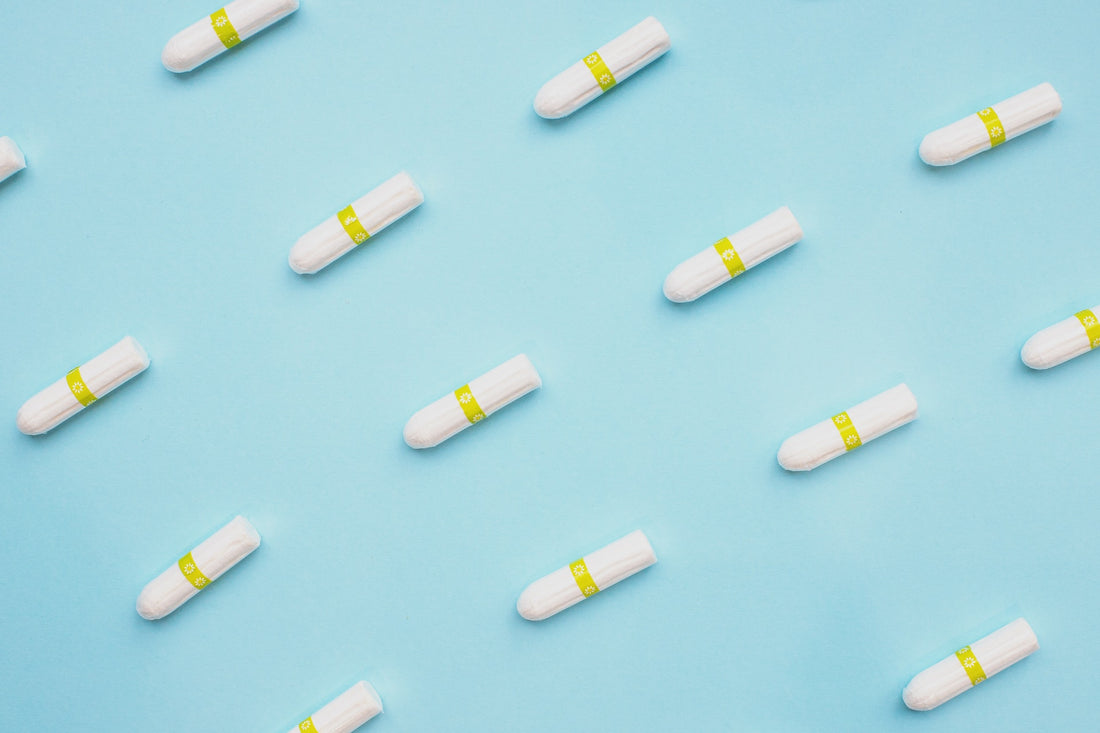As companies start moving to "non-toxic" and "clean" branding, many store shelves are filled with green, trendy labels that boast a product that is healthier for us. However, many personal care products still contain sneaky ingredients that can cause harm. In particular, many tampons on the market contain harmful chemicals such as dioxins, synthetic fragrances, and other additives that can disrupt the delicate balance of hormones in the body. These toxins can also increase inflammation in the body, leading to more painful menstrual cramps.
Dioxin
One of the most concerning ingredients found in some tampons is dioxin, a chemical that is a byproduct of the bleaching process used to make the cotton in tampons white. Dioxin is a known carcinogen that can accumulate in the body over time and disrupt the endocrine system, which is responsible for regulating hormones in the body. When the endocrine system is disrupted, it can lead to hormonal imbalances which can lead to worsened cramps, irregular periods, and even fertility issues.
Dioxin is known to have estrogenic effects, meaning it can mimic the activity of estrogen in the body, which can lead to estrogen imbalances. This has the potential to contribute to conditions such as estrogen dominance, menstrual irregularities, and increased risk of reproductive disorders.
Dioxin exposure has been associated with disruptions in thyroid hormone levels and function.
Rayon
Rayon is a type of synthetic fiber that is derived from natural cellulose, typically sourced from wood pulp. Rayon is highly absorbent and can be processed into a soft and comfortable material, making it suitable for menstrual products like tampons.
While highly effective, it's important to note that the production and processing of rayon can involve various chemicals, including bleaching agents, which can cause inflammation in the vagina. It also increases the risk of toxic shock syndrome (TSS), which occurs when the bacteria in the vagina produce toxins.
Chlorine
Chlorine is used as a bleaching agent in the manufacturing process of tampons and other menstrual products. One of the by-products of this process is dioxin.
Dioxin can bind to hormone receptors and alter their activity, mimic the structure and function of certain hormones, or interfere with hormone synthesis and metabolism. These effects can disrupt the delicate balance of hormones and contribute to increased cramping and other more serious hormone-related issues.
BPA
A commonly known toxic chemical, BPA is now often referred to as the endocrine disrupting chemical because it can interfere with the normal functioning of the endocrine system.
When BPA enters the body, it can mimic the structure and function of estrogen, a key female hormone, and bind to estrogen receptors. Excess estrogen can contribute to hormone-related conditions such as polycystic ovary syndrome (PCOS) and estrogen dominance. In addition, BPA can also affect the function of other hormones such as testosterone, thyroid hormones, and insulin.
BPA exposure has been linked to adverse effects on fertility, including disrupted menstrual cycles and reduced reproductive function.
Fragrance
Many tampons brands often add synthetic fragrances to their products to appeal to younger audiences and those trying to mask their natural scent. These fragrances contain phthalates, which are compounds that can disrupt the endocrine system. Read our blog about how fragrances disrupt our delicate hormone balance here.
Pesticides and Herbicides
In tampons that use non-organic cotton, the risk of residual pesticides and herbicides is high, particularly because cotton is one of the most heavily pesticide-treated crops. Because the vagina is incredibly absorbent, even trace amounts of pesticides can irritate the delicate vaginal tissues and exacerbate menstrual cramps.
Studies have also shown that long-term exposure to pesticides has been associated with adverse effects on reproductive health, including decreased fertility, altered menstrual cycles, and increased risk of hormone-related cancers.
TLDR; Ingredients to avoid in tampons:
- Titanium Dioxide
- Fragrance (Parfum)
- BPA
- Rayon
- Non-organic cotton
- Chlorine
All of these ingredients can disrupt the pH balance of the vagina, leading to inflammation and pain, so it's important to check the ingredient label when purchasing tampons, pads, cups, etc, to ensure that the delicate harmony of your reproductive system is not disrupted.

